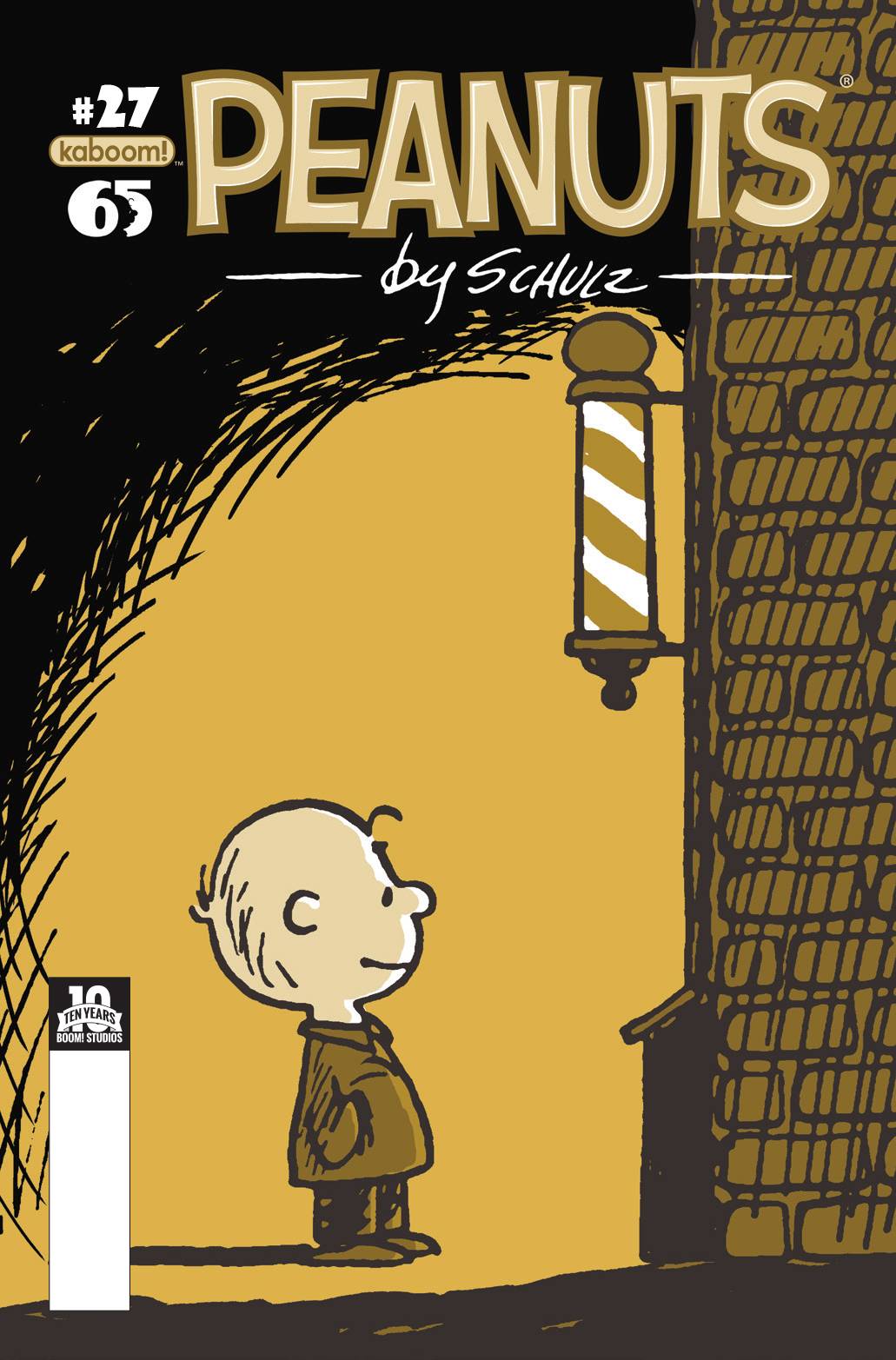Peanuts #27
BOOM! Studios/kaboom!
Written by Jason Cooper
Art by Vicki Scott & Paige Braddock
As I turned the pages of “Get Well Soon, Charlie Brown,” I felt like I had read this story before.
During one of his baseball games, Charlie Brown begins to “feel kind of woozy,” and he leaves the game to go home. Everyone assumes that he’s “been hit on the head with too many fly balls,” but Charlie Brown is checked in to the local hospital. While Sally frets about who will feed Snoopy and moving her stuff into Charlie Brown’s room, Peppermint Pattie and Marcie hold a vigil outside the hospital, and Lucy vows that if Charlie Brown leaves the hospital she won’t pull the football away again.
“Get Well Soon, Charlie Brown” is, like “It’s Summer Camp, Charlie Brown” two months ago, a full-length Peanuts comic book. “It’s Summer Camp,” though it was clearly reminiscent of past Charles Schulz summer camp stories, felt original. “Get Well Soon,” however, kept nagging at me. I knew I had read this story before.
And I had. You can find it on pages 79 through 92 of Fantagraphics Books’ The Complete Peanuts: 1979-1980. Charlie Brown complains of being woozy on July 3, 1979 and checks into the hospital on July 7th. Sally moves into his room on July 10th. Lucy worries on July 16th. Peppermint Pattie and Marcie’s vigil begins on July 20th (and includes the Sunday strip of July 22nd). Lucy makes her vow on July 27th, Charlie Brown attempts the football kick on August 2nd.
It’s the exact same story, down to the dialogue. There are some original beats in “Get Well Soon, Charlie Brown” — Snoopy has a subplot and we get an explanation for why Charlie Brown was hospitalized here that we didn’t in Schulz’s original storyline in 1979. Despite those original beats, the credits more accurately should have read “Written by Charles Schulz, adapted by Jason Cooper.”
Now that that’s out of the way, let me say that, on its own, this comic book is very good. The storytelling is strong, both in the narrative and in the artwork. (Strangely, given the source material, the artwork looks more like mid-60s Peanuts than late-70s Peanuts. Yes, there’a a difference.) The comic isn’t simply a redo of Schulz’s original comic strips; the scenes are restaged and have a comic book, rather than comic strip, flow.
In other words, taken on its own terms, “Get Well Soon, Charlie Brown” is an enjoyable piece of Peanuts. And if you don’t have those original 1979 comic strips, it’s a great way of discovering one of Schulz’s long-form Peanuts stories.

Special. I wish I had read that.